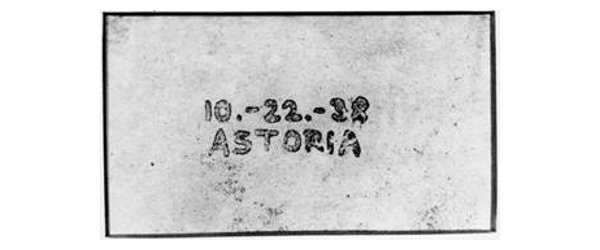
The world’s first xerographic copy was written in a bold hand on a glass slide was the date and location: 10-22-38 Astoria. The copy might have been fuzzy, but it was still a copy.
This year marks the 75th anniversary of the first xerographic image, created by Chester Carlson in a rented second story room in Queens, New York. This humble invention would eventually lead to the formation of the Xerox Corporation and the birth of an industry. Even today, this xerographic process is still at the heart of most office printers and copiers around the world.
Trained as a physicist and lawyer, Carlson was a serial inventor. He kept notebooks full of a wide array of inventions including a rotating billboard, raincoat with gutters and a shoe cleaning machine.
In honour of his inquisitive nature and his remarkable invention, that truly changed how business has been conducted for decades, this October Xerox is kicking off a celebration of innovation and its role in the company’s history and future.
Over the next year, Xerox people will be engaged in a series of activities celebrating and imagining the future through the company intranet, webchats and social media.
"Now is the time when many companies would look back, and we certainly will, but only for a moment. The real focus of our celebration will be the future and how Xerox will continue to simplify how work gets done," said Ursula Burns, Xerox CEO and chairman of the board. "That’s why the theme of our anniversary year is ‘The Next 75.’"
Carlson’s vision at the time of his Astoria experiment was "to make office workers a little more productive and office work a little simpler and less tedious."
Xerox has changed greatly in size and scope since this time, but the basic principles have remained the same. From printers and copiers to transportation, education, and even healthcare the company’s team of engineers, scientists and researchers are continuing to invent in ways that make work, and life, a little simpler.






